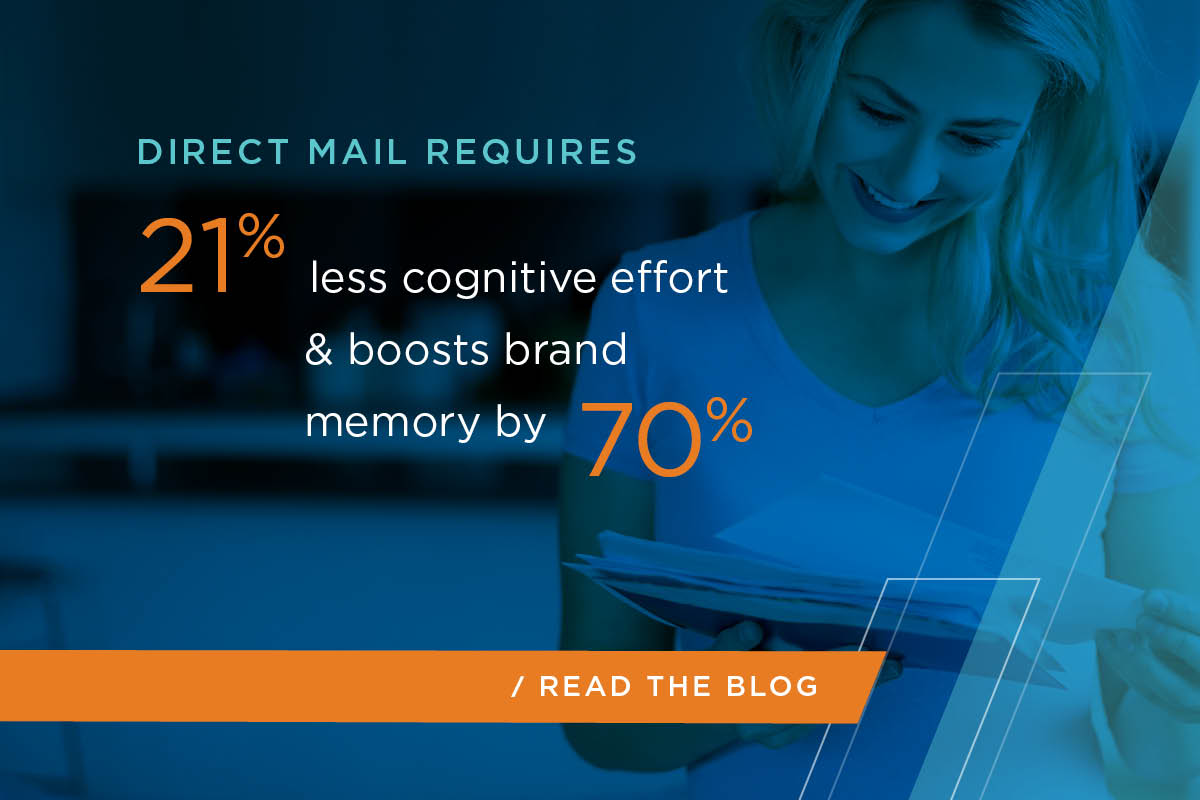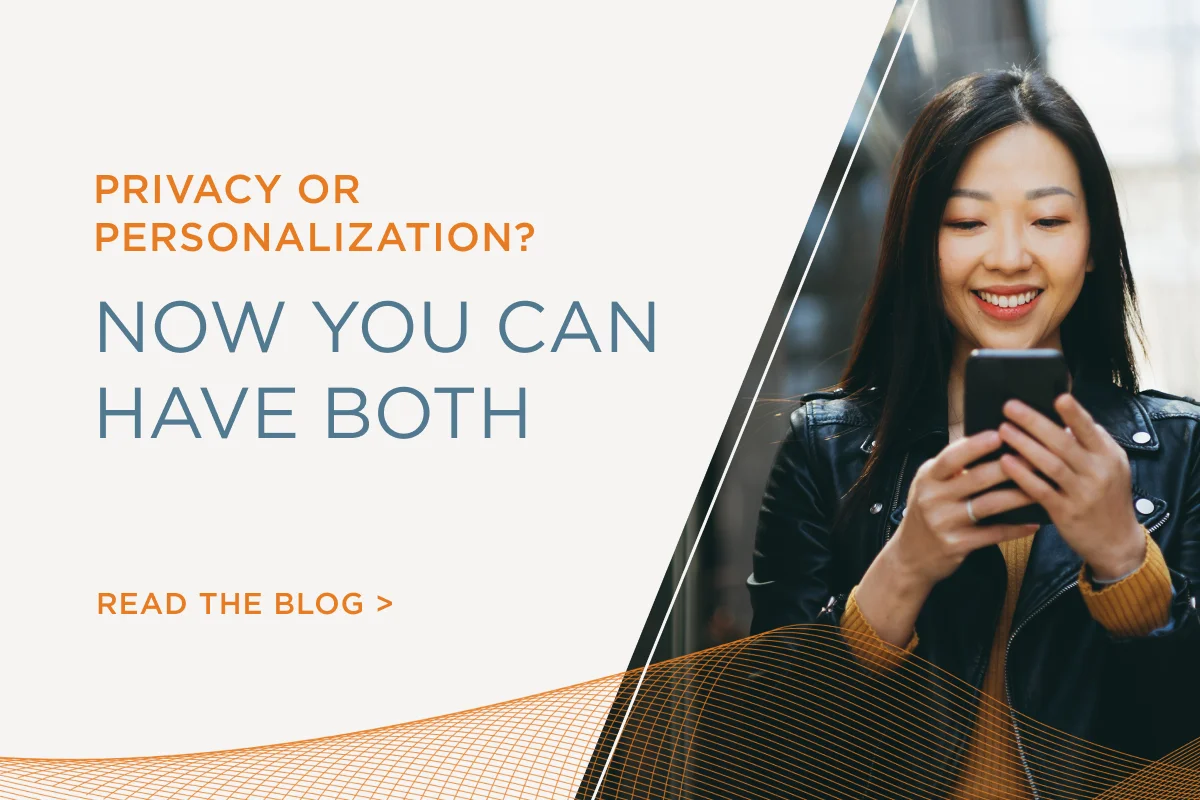Summary
- Marketers have found that direct mail is an indispensable part of the marketing mix, and the pandemic has boosted its importance.
- Scientific studies indicate that direct mail makes a deeper emotional impression and is more likely to inspire action than digital media.
- Digital media is generally more suited to grabbing attention and delivering a message quickly.
- Marketers can get the best results by incorporating direct mail into a unified print + digital strategy.
It’s no secret that consumers are increasingly going online to get their news and entertainment and to carry out ordinary tasks like shopping and paying bills. Even in such a world — perhaps, especially in such a world — there remains something uniquely compelling about the tactile, multi-sensory experience of going to the mailbox, sorting through the mail, and opening an envelope or package. And the pandemic has amplified that.
The field of neuroscience sheds important light on exactly why this experience is so compelling to so many. But the point isn’t just to celebrate the effectiveness of direct mail. By diving into the science behind it, we can get a better understanding of the optimal role for direct mail in omnichannel marketing strategies. And, for us data-driven marketers, that is exciting stuff.
The Curious Staying Power of Direct Mail
There’s something curious about the staying power of connecting with consumers through the mail. In an increasingly digital age, marketers keep coming back to this tried-and-true tactic. Our research shows that when businesses try to scale back their direct mail efforts or shift their direct mail dollars to other areas, they experienced almost immediate financial losses.1
Not even a global pandemic has been able to bring down direct mail. Beyond surviving, direct mail is thriving as the pandemic has propelled it to a whole new level of importance. To illustrate, as the pandemic forced consumers to spend more time at home, our consumer study conducted in November of 2020 found that 34% were spending more time reading direct mail ads, and 31% were more excited to receive their mail each day.2
And the point goes beyond lockdown boredom causing people to pore over their mail. Direct mail is generating meaningful action. According to a March 2022 Vericast study, 53% of consumers surveyed noted that direct mail influences them to visit a restaurant or order delivery/carryout. Additionally, 47% agreed that it motivates them to try a new store or business.3
What Makes Direct Mail So Effective?
Of course, all of this raises the question: Why? What is it about direct mail that makes it such a persistently important part of the marketing mix?
The short answer is that people just respond differently to direct mail than they do to digital media. One academic study after another has backed this up.
For example, a study performed by neuromarketing firm TrueImpact on behalf of Canada Post found that direct mail requires 21% less cognitive effort to process and produces 70% higher brand recall than digital advertising.4
In another set of studies, the U.S. Postal Service partnered with researchers from Temple University in 2015 — and again in 2019 — to look at the differing impact of print and digital advertisements. Here are a few of the key findings:5
- Direct mail holds our attention longer. We spend more time reviewing print media than digital, and younger people spend even more time with print than older generations.
- Direct mail elicits a stronger emotional response, leaving a longer-lasting impact.
- Direct mail is more memorable. Across all age groups, we can more quickly and confidently remember the content and sources of print advertising.
- Direct mail produces greater desire. We place a higher subconscious value on products or services we see in print ads.
What’s more, the Temple research indicates we may even be “hardwired” to respond this way. The researchers found that print advertising activates the ventral striatum area of the brain more than digital media. A prior study found that activity in this brain region was an indicator of desire and valuation — a better indicator than self-reporting. Loosely akin to the mythical “buy button,” the ventral striatum is the area that has the highest correlation to advertising effectiveness.6
Is Direct Mail Always the Best Option?
Along many dimensions, direct mail tends to be more effective than its digital counterparts — but not all.
The Temple researchers found that digital advertising held readers’ focus on key components of the ad for longer. So, even though people generally spent less time reviewing digital ads, they were ultimately able to process and absorb the same amount of information from digital and paper advertising.7
These findings suggest that direct mail and digital media have distinct roles to play in an omnichannel marketing strategy. Consider using digital media in cluttered environments where you have to grab attention and deliver your message quickly. But, when you’re out to make a deeper emotional connection with consumers and inspire them to action, consider using some form of direct mail.
Of course, it takes data — and expertise in interpreting that data — to accurately and scientifically determine the optimal blend of print and digital media for your campaigns. That’s where Vericast comes in. We use predictive intelligence to convert billions of consumer signals (tied to both location and behavior) into meaningful action across online and offline channels. By letting the data show you the most impactful ways of connecting with your consumers, you just might discover that direct mail can significantly enhance your next omnichannel campaign.
To learn more about the unique conditions that are presently amplifying the importance of direct mail in the marketing mix, check out our ebook, This Direct Mail Moment. While you’re at it, refer to our video series dedicated to clearing up common misconceptions about direct mail. You can find both the ebook and the video series here.



